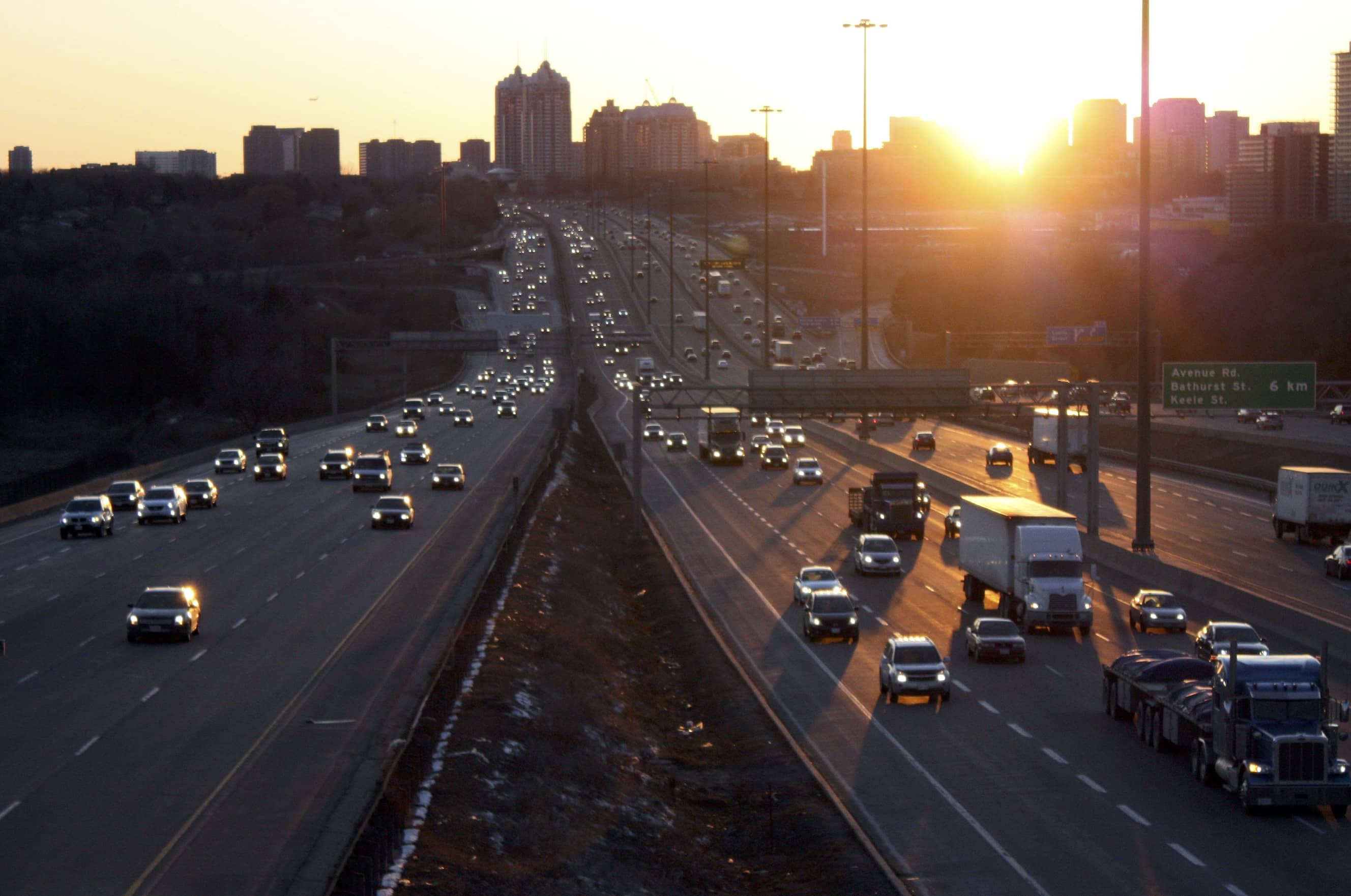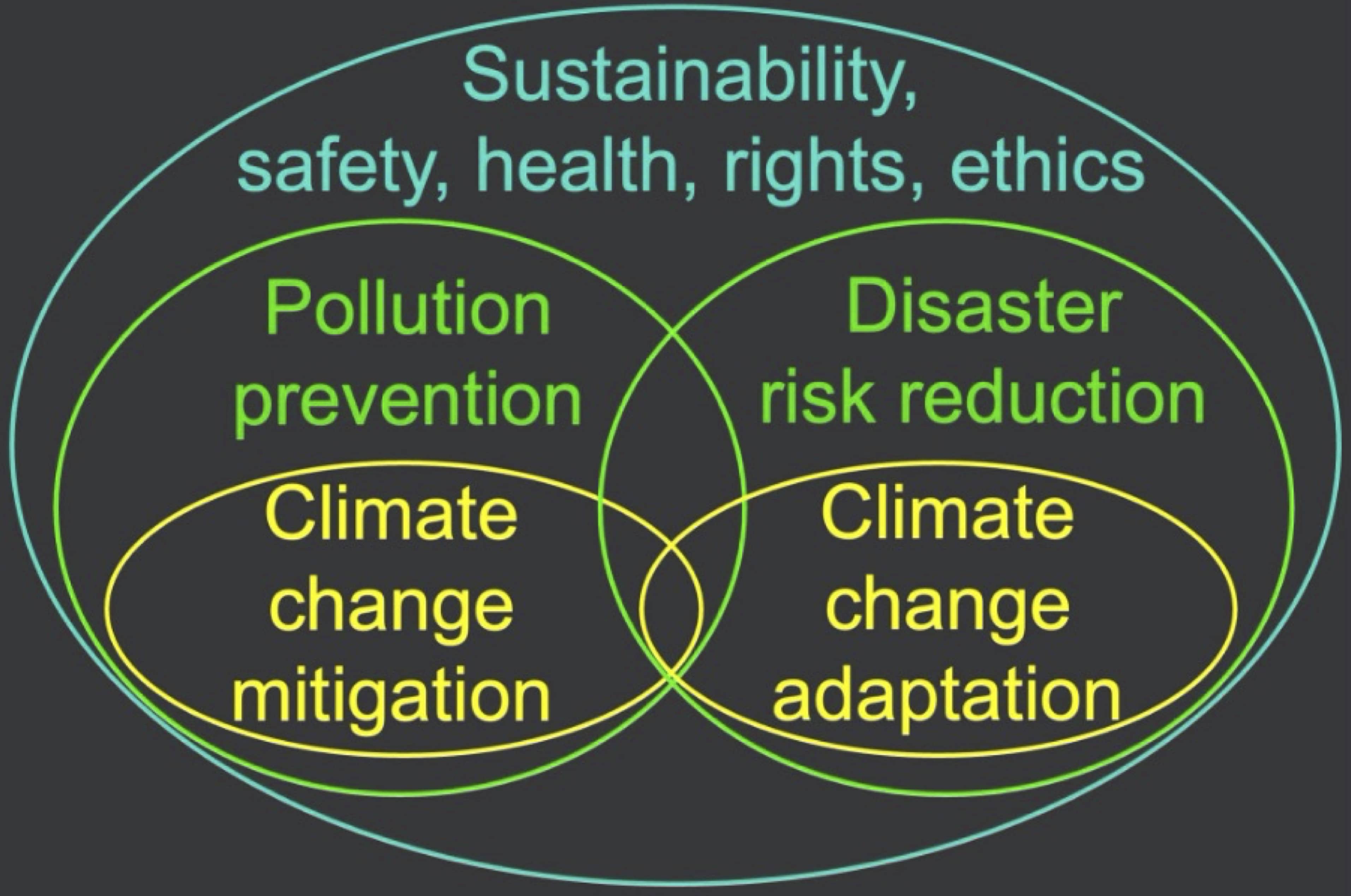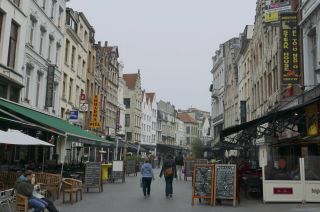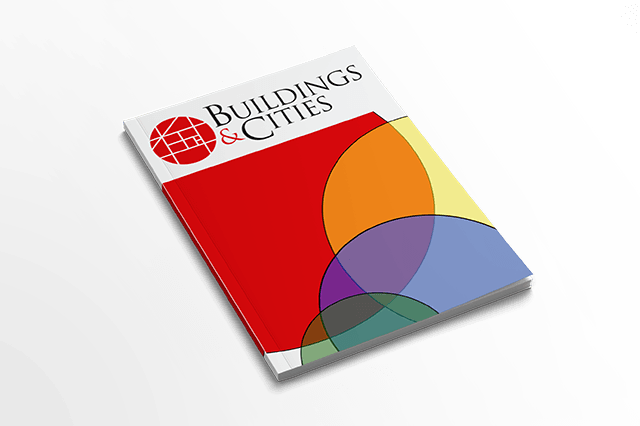
www.buildingsandcities.org/insights/commentaries/designing-beyond-climate-change.html
Designing Beyond Climate Change

Challenges ahead: sustainable design is much more than addressing climate change
Humanity is changing the Earth's climate quickly and substantially. Huge impacts are now evident on the weather, oceans, ecosystems and certainly on buildings and cities. So much remains to be done around the world to reshape our infrastructure for the ongoing and coming impacts from human-caused climate change. Ilan Kelman (University College London) explains why the challenge is doing so without losing sight of other minor and major dangers.
Not only climate change
Imagine that we design a hospital or school perfectly suited to the changing climate. It might be off the main energy grid, generating its own electricity from local, renewable sources, perhaps microhydro from a nearby river with small-scale wind turbines on the roof. It may also be built away from the expanding floodplain and with natural ventilation and passive cooling to ward off the brutal heat.
This sounds wonderful! What if this climate change appropriate design still exposes building users to other pollution, like formaldehyde or asbestos fibres? Or perhaps it is built near a main road causing local air and noise pollution? Sustainable design is not just about climate change mitigation (CCM). 'Pollution prevention', which encapsulates CCM, needs to guide designs to reduce the overall contamination load on people from all sources of pollutants; chemicals, noise, light, and all others.
Designing for climate change adaptation (CCA) - such as avoiding damage from weather, floods, and droughts while taking advantage of the changing climate's opportunities - is becoming an important part of sustainable designs. However, broader 'disaster risk reduction' (DRR) should be sought, meaning avoiding all catastrophes by considering all hazards and threats, ranging from volcanic ash loading to terrorism.

Further, sustainable design must consider issues beyond the creation of buildings and their operation, for instance, addressing safety and security to prevent theft and to have safe drinking water for occupants. It should address more general societal considerations, such as onsite food production to support the building and its local community. These concepts are illustrated in Figure 1.
Thus, the design challenge within this context is about society's values and governance, not just infrastructure. A school might be perfectly suited to avoid any form of pollution, yet girls are not permitted to attend, or a hospital might withstand any hazard including space weather (such as solar flares and geomagnetic storms knocking out electricity) and vehicle impacts, yet be pay-per-use.
If we accept sustainable design must go beyond the causes and consequences of human-induced climate change, then societal impacts from all the built infrastructure must be considered. This introduces a vast range of social and environmental issues into the design process: just and equitable access; local sourcing; supporting small businesses; traffic and fire safety campaigns; and encouraging healthy lifestyles, etc. Addressing these and other issues helps to make a sustainable city.
Traditionally, these issues may be perceived to go beyond the remit of designing single buildings, since they emerge from issues associated with broader governance, social structures, equity, political power, and resource allocation. This does not mean they should be ignored by designers. After all, if we stopped changing the climate tomorrow, then buildings and cities would still be subject to numerous societal problems like organ trafficking, human slavery, animal cruelty, deforestation, overfishing, sexism, racism, and oppression. Human-caused climate change is one symptom among many of problems with basic human values and behaviours, and so should not have a monopoly on what makes good sustainable design.
Of course, designing at a city scale can do much more across these areas than at the building scale, but design should always seek to change how people treat each other. Designing for climate change exclusively and neglecting these wider and deeper societal issues may produce more problems than it solves.
What researchers offer
Bringing together all these topics cannot be the role of specialists. Although we need experts who focus on the detail, generalists are required for a 'big picture' view and integration. For example, this may entail analysing movement modes throughout cities and an entire building's multi-hazard resistance.
Medicine uses multi-disciplinary teams for diagnosis and treatment decisions, rather than relying on only a throat surgeon or a flu vaccinologist to treat all respiratory ailments. Our planet, and ourselves, are suffering from severe illnesses. The diagnosis is clear: too much human consumption of all resources and damage to nature. The main cause is more intensive consumption per person, driven by lifestyle expectations and short-term wealth accumulation over long-term sustainability.
Fortunately, treatment options are available, with buildings and cities being an essential component among many. We must consume (including through infrastructure) at a certain rate and in particular ways in order to achieve the top-level sustainability aspirations outlined in Figure 1. Altering how much and how we consume requires options and preferences from multi-disciplinary teams.
The questions are difficult, wide ranging and numerous; can passive cooling alone make schools and hospitals bearable during the heatwaves projected from human-caused climate change? What are life cycle costs and benefits of microhydro and local wind turbines, since materials and skills are not always available nearby? How much land is required to feed a hospital and does acquiring that land isolate the hospital from its community? Do teachers and doctors have a role to redress poverty caused by governance decisions far away?
Researchers are talented at formulating these tough but essential questions. Researchers love trying to answer them in order to offer evidence and processes for acting on these immense challenges. Evidence-informed design, ensuring that more problems are not created through one 'solution'; collating generalities and specialties; and linking science, policy, and practice to support each other - these are the strengths of researchers.
Part of this process is avoiding the 'presentism' of scrutinising only what is happening in the present, right here and now. Researchers offer the richness of humanity's cross-cultural millennia alongside projections into the distant future. From the Roman Empire's building and city layouts making the best use of passive solar, to Japan's centuries-old tsunami stones warning of previous inundation zones, we can learn from the knowledge and wisdom of humanity.
Researchers also explore 'what…if' scenarios. If human population were to be ethically stabilised, would overall consumption decline or would resource use per person accelerate? What would these changes mean for city population density and services? Should we collect people into mainly self-contained high-rises with shops and services on the ground floor so that the world's inhabited footprint decreases? Or should all households own their own abode surrounded by abundant acreage for local food, freshwater, and energy?
As is usual, the answer is likely to be contextual through a mixture of all approaches - such as growing local food while reducing waste. Modelling and mapping out the consequences of different options comes from specialist research. Simultaneously, generalist research can keep us focused on the long-term goals: stopping climate change and adjusting to its impacts, yes, but not at the expense of all the other issues affecting us and creating our future.
Moving forward
A balance exists for sustainable design in neither neglecting human-caused climate change nor letting it dominate. A balance must also be accepted regarding what the design of buildings and cities can achieve and what is beyond its scope. Researchers offer directions on reaching these balances and in bringing together people, expertise, ideas, and realities to collaborate on doing the best for buildings, cities, and especially society in the face of human-caused climate change - and so much more.
Latest Peer-Reviewed Journal Content
Designing for pro-environmental behaviour change: the aspiration–reality gap
J Simpson & J Uttley
Lifetimes of demolished buildings in US and European cities
J Berglund-Brown, I Dobie, J Hewitt, C De Wolf & J Ochsendorf
Expanding the framework of urban living labs using grassroots methods
T Ahmed, I Delsante & L Migliavacca
Youth engagement in urban living labs: tools, methods and pedagogies
N Charalambous, C Panayi, C Mady, T Augustinčić & D Berc
Co-creating urban transformation: a stakeholder analysis for Germany’s heat transition
P Heger, C Bieber, M Hendawy & A Shooshtari
Placemaking living lab: creating resilient social and spatial infrastructures
M Dodd, N Madabhushi & R Lees
Church pipe organs: historical tuning records as indoor environmental evidence
B Bingley, A Knight & Y Xing
A framework for 1.5°C-aligned GHG budgets in architecture
G Betti, I Spaar, D Bachmann, A Jerosch-Herold, E Kühner, R Yang, K Avhad & S Sinning
Net zero retrofit of the building stock [editorial]
D Godoy-Shimizu & P Steadman
Co-learning in living labs: nurturing civic agency and resilience
A Belfield
The importance of multi-roles and code-switching in living labs
H Noller & A Tarik
Researchers’ shifting roles in living labs for knowledge co-production
C-C Dobre & G Faldi
Increasing civic resilience in urban living labs: city authorities’ roles
E Alatalo, M Laine & M Kyrönviita
Co-curation as civic practice in community engagement
Z Li, M Sunikka-Blank, R Purohit & F Samuel
Preserving buildings: emission reductions from circular economy strategies in Austria
N Alaux, V Kulmer, J Vogel & A Passer
Urban living labs: relationality between institutions and local circularity
P Palo, M Adelfio, J Lundin & E Brandão
Living labs: epistemic modelling, temporariness and land value
J Clossick, T Khonsari & U Steven
Co-creating interventions to prevent mosquito-borne disease transmission in hospitals
O Sloan Wood, E Lupenza, D M Agnello, J B Knudsen, M Msellem, K L Schiøler & F Saleh
Circularity at the neighbourhood scale: co-creative living lab lessons
J Honsa, A Versele, T Van de Kerckhove & C Piccardo
Positive energy districts and energy communities: how living labs create value
E Malakhatka, O Shafqat, A Sandoff & L Thuvander
Built environment governance and professionalism: the end of laissez-faire (again)
S Foxell
Co-creating justice in housing energy transitions through energy living labs
D Ricci, C Leiwakabessy, S van Wieringen, P de Koning & T Konstantinou
HVAC characterisation of existing Canadian buildings for decarbonisation retrofit identification
J Adebisi & J J McArthur
Simulation and the building performance gap [editorial]
M Donn
Developing criteria for effective building-sector commitments in nationally determined contributions
P Graham, K McFarlane & M Taheri
Join Our Community

The most important part of any journal is our people – readers, authors, reviewers, editorial board members and editors. You are cordially invited to join our community by joining our mailing list. We send out occasional emails about the journal – calls for papers, special issues, events and more.
We will not share your email with third parties. Read more



Latest Commentaries
COP30 Report
Matti Kuittinen (Aalto University) reflects on his experience of attending the 2025 UN Conference of the Parties in Belém, Brazil. The roadmaps and commitments failed to deliver the objectives of the 2025 Paris Agreement. However, 2 countries - Japan and Senegal - announced they are creating roadmaps to decarbonise their buildings. An international group of government ministers put housing on the agenda - specifying the need for reduced carbon and energy use along with affordability, quality and climate resilience.
Building-Related Research: New Context, New Challenges
Raymond J. Cole (University of British Columbia) reflects on the key challenges raised in the 34 commissioned essays for Buildings & Cities 5th anniversary. Not only are key research issues identified, but the consequences of changing contexts for conducting research and tailoring its influence on society are highlighted as key areas of action.